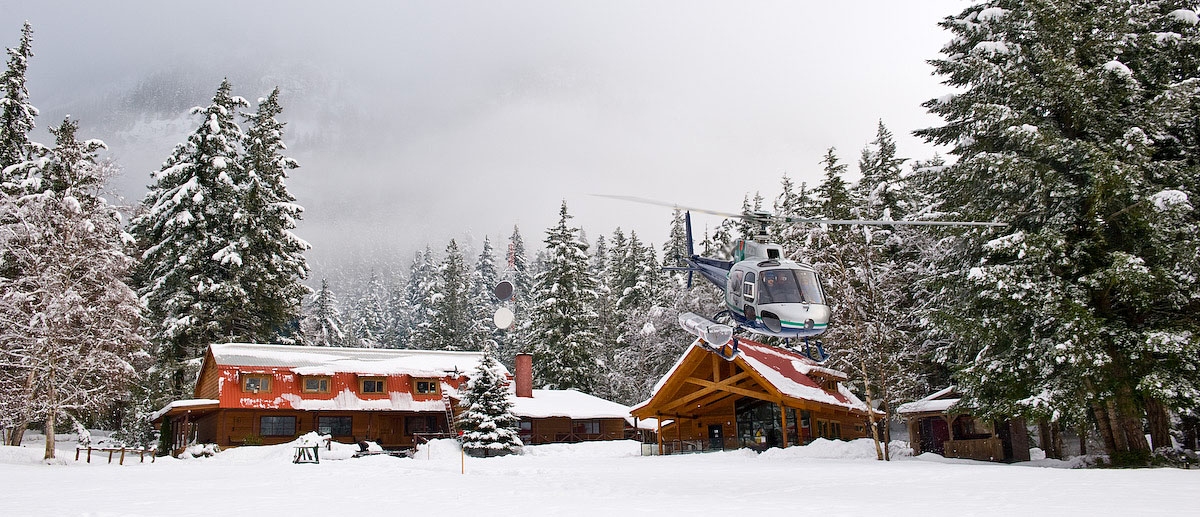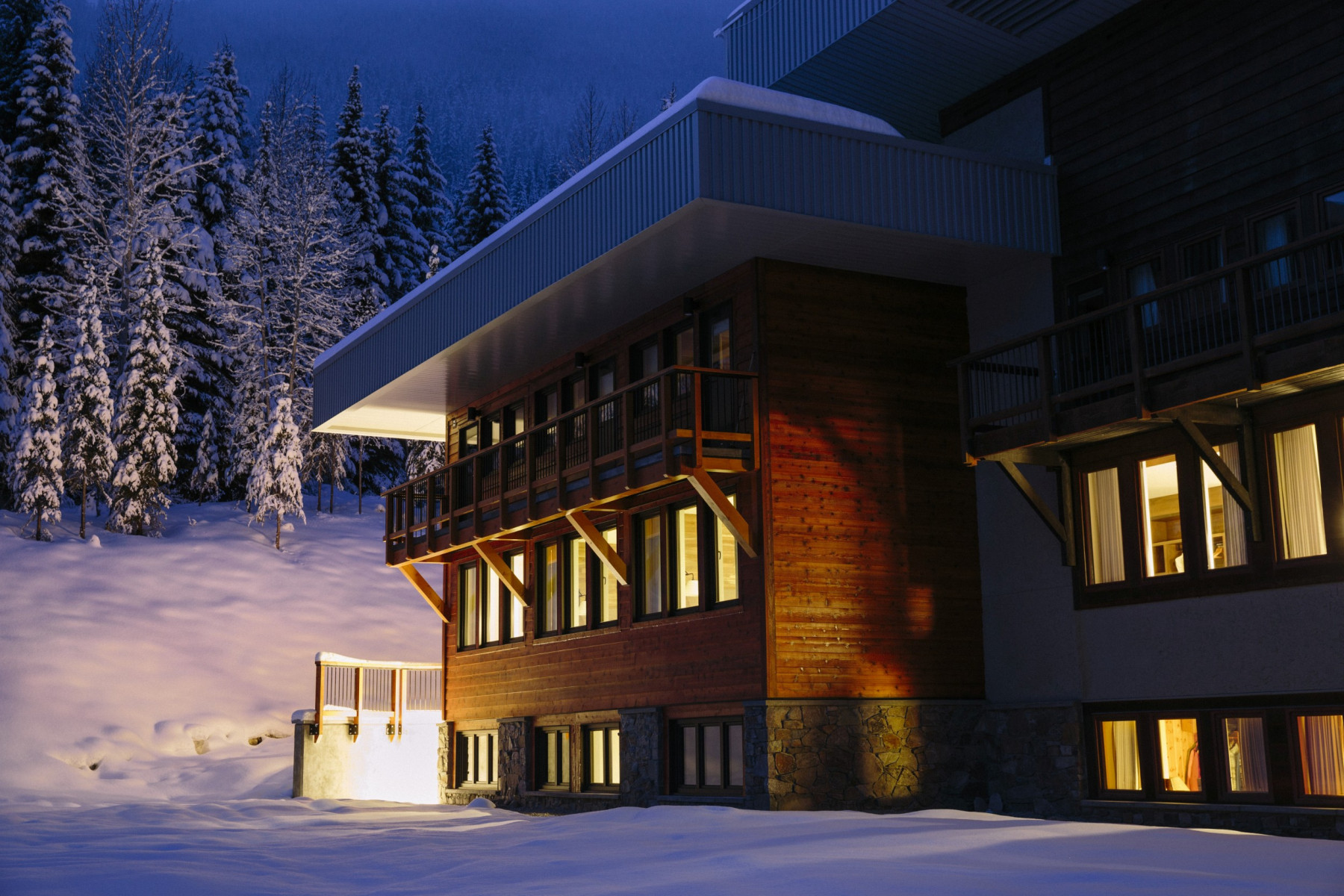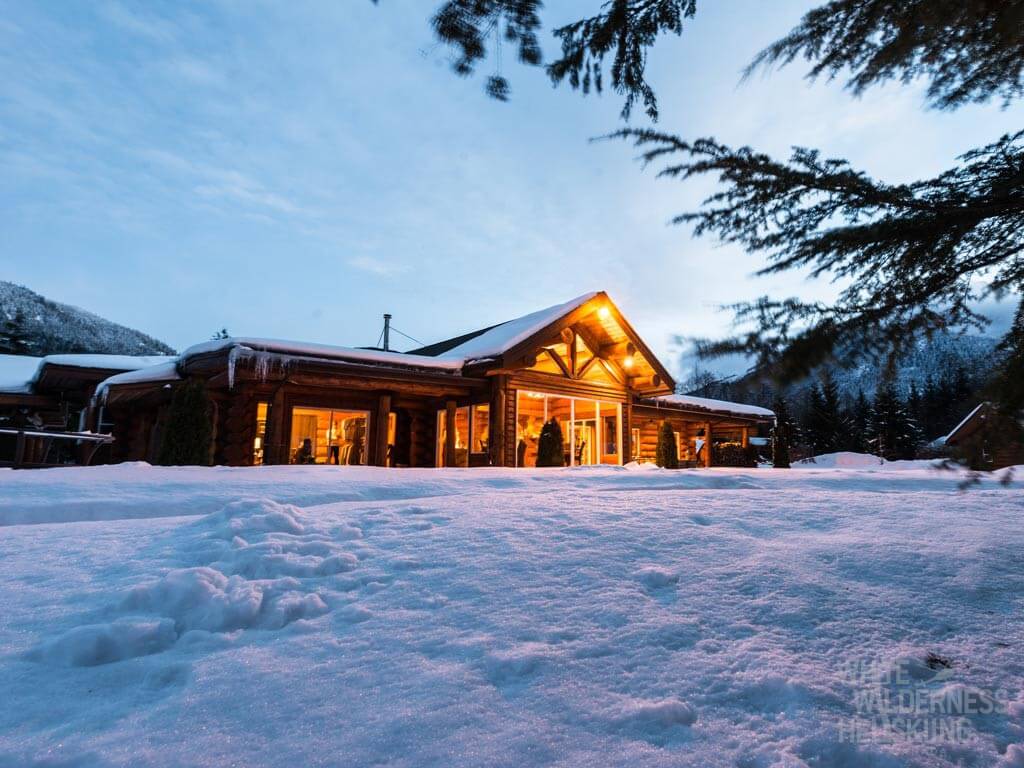A natural slalom through the winter wonderland of Canada, powdering in the fairytale forest or simply treeskiing - forest descents are the greatest thing for advanced freeriders. Especially in world-class treeskiing areas such as the Monashees, the Selkirks, the Cariboos or the McGregor Range.
But is treeskiing dangerous? What should you be aware of? And above all: why is it so much fun? TRAVELZONE answers the five most important questions about treeskiing.
![]()
- What is the terrain like when treeskiing?

That depends on whether you are skiing in a secured ski area or in open terrain. In North America, it is common for ski resort operators to protect not only the groomed slopes from avalanches, but the entire area - including the forests away from the slopes, which are ideal for treeskiing. These are often prepared for treeskiing in summer. In so-called "glazed terrain", bushes and undergrowth are removed and closely spaced trees are thinned out to create ideal conditions for treeskiing. In open terrain, for example when heli or cat skiing, this is of course rarely possible, but the guides know the terrain inside out and know where the best slopes for treeskiing are.
2 What equipment do I need for treeskiing?
You don't need any special equipment for treeskiing. However, the usual safety equipment for freeriding should always be with you, even on forest descents. There are also a few things to bear in mind. Your wrists should not be in the loops of the ski poles when skiing downhill. This reduces the risk of injury if you get caught in a tree with your poles. You should also wear ski goggles when treeskiing, as small branches can quickly get in your eyes. If the lens is too dark for the forest descent, you should have a lighter-colored spare lens with you.
3. how do I ski when treeskiing?
![]()
There is no general answer as to which line is best. However, you should ski as close as possible to the fall line - i.e. straight down instead of zigzagging. It's best to look for a nice line from the top without any other tracks, as you can control your speed much more easily in untracked snow. On the descent, aim for the gaps in between instead of the tree trunks. If you look at the trunk, you are skiing against it. A steady rhythm, in which each turn is followed by a breath, pays off. You should also pick up some speed to make the tight turns easier. And then, above all, the "buddy system" comes into play: you set off together with your buddy and you are within sight of each other (two turns apart) and in constant "noise contact" - yodeling or making other sounds. The forest absorbs the sound, so you should never ride too far away from each other. Take turns in the lead role so that you find a pace that is good for both of you. If one of you falls, your "buddy" will be right there to help.
2 What equipment do I need for treeskiing?
You don't need any special equipment for treeskiing. However, the usual safety equipment for freeriding should always be with you, even on forest descents. There are also a few things to bear in mind. Your wrists should not be in the loops of the ski poles when skiing downhill. This reduces the risk of injury if you get caught in a tree with your poles. You should also wear ski goggles when treeskiing, as small branches can quickly get in your eyes. If the lens is too dark for the forest descent, you should have a lighter-colored spare lens with you.
3. how do I ski when treeskiing?

There is no general answer as to which line is best. However, you should ski as close as possible to the fall line - i.e. straight down instead of zigzagging. It's best to look for a nice line from the top without any other tracks, as you can control your speed much more easily in untracked snow. On the descent, aim for the gaps in between instead of the tree trunks. If you look at the trunk, you are skiing against it. A steady rhythm, in which each turn is followed by a breath, pays off. You should also pick up some speed to make the tight turns easier. And then, above all, the "buddy system" comes into play: you set off together with your buddy and you are within sight of each other (two turns apart) and in constant "noise contact" - yodeling or making other sounds. The forest absorbs the sound, so you should never ride too far away from each other. Take turns in the lead role so that you find a pace that is good for both of you. If one of you falls, your "buddy" will be right there to help.
Are you looking for a Once in a Lifetime adventure in Champagne Powder? Then you might become a repeat offender. There is an acute risk of addiction!




4. is treeskiing dangerous?
![]()

If you follow the most important rules and have a local guide at your side, you can master forest descents without hesitation. However, without exception, you should never go treeskiing alone, but always take a partner with you. The danger of treeskiing lies in the so-called "tree wells". But what are they? They are the funnels around large trees where there is no snow. Depending on how much snow a slope gets over the course of the season, such a funnel can be several meters deep. To avoid falling into such a tree well, you should avoid them as much as possible. And if it does happen, it's important to keep calm. Because if you move and try to get out, you often slide even deeper into the loose snow. Now it is important that the "buddy" is close by and rushes to help as quickly as possible by working his way to the person who has had an accident - if necessary from below at an angle with the shovel.
5 Why is treeskiing so popular?
Treeskiing is not just an alternative program for bad weather days when cat or heli-skiing, but an exciting discipline in itself. The tranquillity of the forest, the closeness to nature and the rhythmic turns can conjure up a magical feeling of happiness. Two or three turns, then jumping over a small ledge and landing two meters further down in bottomless powder, over and over again - what more could a freerider's heart desire? In addition, the team spirit creates an extraordinary atmosphere when treeskiing. The quality of the snow is also a key factor in the popularity of forest descents. Even days after the last snowfall, you can still find real powder in the forest that has been preserved in the shade of the trees.
5 Why is treeskiing so popular?
Treeskiing is not just an alternative program for bad weather days when cat or heli-skiing, but an exciting discipline in itself. The tranquillity of the forest, the closeness to nature and the rhythmic turns can conjure up a magical feeling of happiness. Two or three turns, then jumping over a small ledge and landing two meters further down in bottomless powder, over and over again - what more could a freerider's heart desire? In addition, the team spirit creates an extraordinary atmosphere when treeskiing. The quality of the snow is also a key factor in the popularity of forest descents. Even days after the last snowfall, you can still find real powder in the forest that has been preserved in the shade of the trees.
Strong enough?
Not sure if you are strong enough for heliskiing? Get in touch with us. We can also do a video check-up. We have been heliskiing with thousands of skiers and know all the areas. So we can assess with you where you will have the most fun in the powder!
To the heliski check-up 
Monashees Lodge @ CMH Heli-Skiing
Info & Prices
Mountain Lodge @ Northern Escape Heli-Skiing
Info & Prices
Hillcrest Lodge @ Selkirk Tangiers Helicopter Skiing
Info & Prices
Galena Lodge @ CMH Heli-Skiing
Info & Prices
Kootenay Lodge @ CMH Heli-Skiing
Info & Prices
Bobbie Burns Lodge @ CMH Heli-Skiing
Info & Prices
Bison Heliski Lodge Revelstoke
Info & Prices
Adamants Lodge @ CMH Heli-Skiing
Info & Prices
Skeena Salmon Lodge @ White Wilderness Heli-Skiing
Info & Prices
Valemount Lodge @ CMH Heli-Skiing
Info & Prices
Cariboo Lodge @ CMH Heli-Skiing
Info & Prices
Bighorn Heliski Lodge Revestoke
Info & Prices
Gothics Lodge @ CMH Heli-Skiing
Info & Prices
Yellow Cedar Lodge @ Northern Escape Heli-Skiing
Info & Prices
Flying Moose Heliskiing Chalet Revelstoke
Info & Prices
Bugaboo Lodge @ CMH Heli-Skiing
Info & Prices
Whiteworth Heliskiing Chalet Revelstoke
Info & Prices



